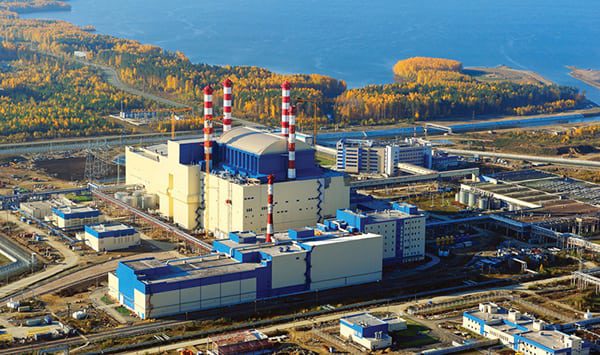Russian Fast Reactor Connected to the Grid
In a leap for fast neutron power technology, Russia’s Rosatom has connected Unit 4 of its Beloyarsk nuclear plant in the Urals region to the grid. The 880-MW BN-800 unit—the latest generation of fast reactor technology first launched in Russia about 35 years ago—has restored the country’s mastery in the field of design and construction of fast reactors, Russian officials said.
The BN-800 is a fast reactor design that uses liquid sodium as a coolant and heat transfer agent. It was developed from a pilot reactor (a BN-600) that was installed at the Beloyarsk site (Figure 1) in 1980, which at the time housed a water-cooled graphite-moderated channel-type slow-neutron ABM-100 and ABM-200. Both were decommissioned in the 1980s, and the BN-600’s lifetime was extended until 2025.
 |
|
1. Fast development. Rosatom’s fourth unit at its Beloyarsk nuclear power plant is a BN-800 fast breeder reactor that was connected to the grid in December 2015. Courtesy: Rosatom |
Construction of the BN-800 and a bigger BN-1600 unit at the site were begun in 1984, with startup of the BN-800 originally planned for 1992. But after the Chernobyl disaster in 1986, the reactors’ construction was suspended, along with all nuclear power plants under construction in the Soviet Union at the time. Officials at state-owned nuclear company Rosenergoatom said that the technology was improved during the long period of suspension.
In 2006, the BN-800’s construction was revived. General construction contractor Uralenergostroy Management spearheaded the project along with Saint-Petersburg Institute Atomenergoproekt, the project’s general designer. The reactor was brought to minimum controlled power in 2014, but fuel development issues delayed its connection to the national grid. As of early January, the reactor was operating at 25% capacity.
For Russia, the reactor that uses a uranium and plutonium mixed oxide (MOX) fuel is particularly important because it could result in more than a 50-fold increase in the usage of extracted natural uranium. Meanwhile, it could eliminate spent fuel waste, resolve storage issues, and, critically, eliminate weapons-grade plutonium created as a result of energy conversion. “When some serial power units with fast reactors appear in Russia, together with facilities for MOX-fuel fabrication and spent fuel regeneration, there will be a ‘loopback’ of the nuclear fuel cycle, which means centuries-long prospects for the Russian nuclear power industry,” the company said.
Rosenergoatom is now mulling the further expansion of the Beloyarsk plant with the construction of a fifth unit, possibly a 1,200-MW fast reactor. Many infrastructure facilities built on the BN-800 unit site are designed for two power units, the company said. “And the team of builders, which accumulated experience in the course of BN-800 construction, will apply its skills at the next power unit construction,” it added.